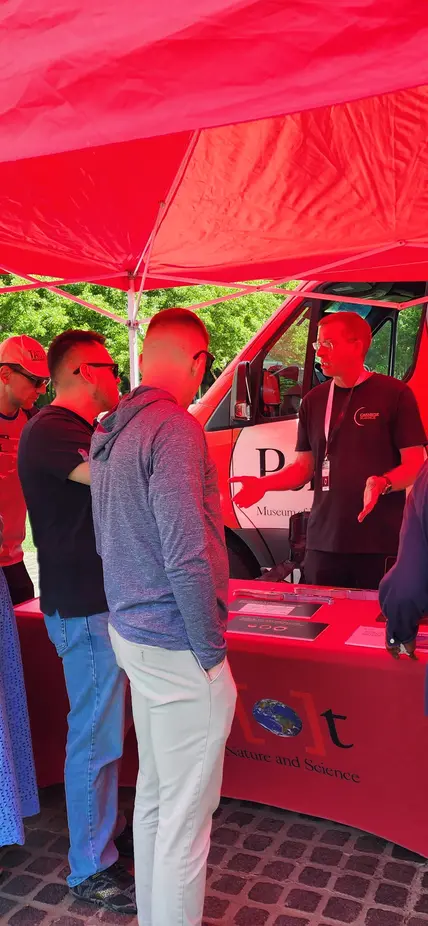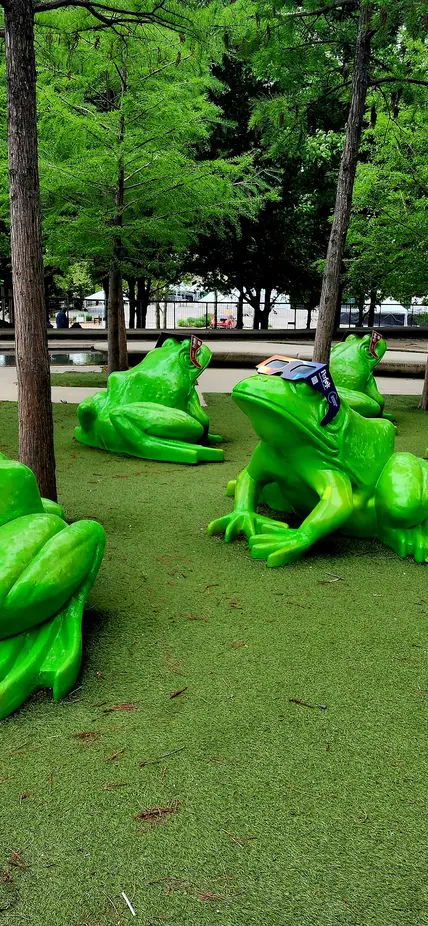Four experts from Carnegie Science’s Las Campanas Observatory traveled to Dallas in April to help educate the North Texas community about the Great North American Eclipse as part of our partnership with the Perot Museum of Nature and Science. Along with colleagues from Carnegie Science’s Earth and Planets Laboratory and Observatories, they visited schools, parks, community centers, and other facilities in order to share the science of eclipses and safe viewing tips.
This group represented the only official delegation from a Chilean telescope that was participating in outreach and education efforts in the U.S. for the 2024 eclipse.
A total solar eclipse occurs when the Moon, following its regular orbit, comes between the Sun and the Earth, bringing the three bodies into alignment for a terrestrial viewer. Since the apparent size of our satellite equals that of the Sun in the sky, the solar disk is totally covered by the Moon for those in the path of totality. April 8th’s total solar eclipse was particularly special because the duration of totality was long, nearly four minutes in Dallas and even longer in some areas.
"The work Carnegie Science did in Dallas for the eclipse was extraordinary,” said Guillermo Blanc, Associate Director of Strategic Initiatives at Las Campanas. “I'm proud that our astronomers were able to interact directly with more than 15,000 children in the days leading up to the eclipse, and with millions of people through our media interviews. I think we were able to excite a lot of people, educating them to enjoy the eclipse safely, and transmitting to them the importance of astronomy and science.”
For Resident Astronomer Nidia Morrell, who had previously witnessed the 2019 total solar eclipse visible in northern Chile, the experience was unforgettable.
“In the schools the children had been preparing for our visit,” she said. “For example, they had made posters related to astronomy. People were very interested in learning about the eclipse. The questions the children asked were extraordinary.”
Associate Director David Osip also highlighted the great enthusiasm for the eclipse from people of all ages.
"At several events people didn't want to ask us a 'stupid question' and the surprise was that we, as astronomers, have those same kinds of questions, plus the same interest and fascination with the total eclipse experience,” he explained.
Because Las Campanas Observatory was within the zone of totality of the 2019 solar eclipse visible, Carnegie Science’s Chilean delegation were able to bring that experience to the table as they engaged with people in Dallas.
"The opportunity to have this experience in our observatory, with all the preparation that it involved, was the most exciting and memorable thing on my part,” Osip added. “This was the reference to explain to everyone in Dallas that a total solar eclipse is a multi-sensory experience: the silence of nature as day turns to night in an instant, the abrupt drop in temperature and, of course, the breathtaking view of the Sun's corona.”
"The main difference between the 2019 eclipse and the one this April 8 in North America is that the latter was longer. In the 2019 eclipse in La Serena, totality lasted 2 minutes,” Morrell concluded. “Also, this time the Sun was much more active, and the bulges were visible. Nevertheless, both were wonderful spectacles.”

